SATOSHI NAKAMOTO AND THE SKYCOIN PROJECT . "FACT IS STRANGER THAN FICTION"
orld was reeling from financial crisis after financial crisis, this unknown, unassuming man introduced a radical idea: what if instead of depending on governments — and the men and women who run them — to determine our financial fate, we could find a technological solution? A solution that defies convention: a cryptographically secure digital currency that can be trusted because it is trustless, that can be stable because it is digital, and that was created by man but isn’t beholden to man’s whims
Initially Satoshi was ignored, ridiculed, and dismissed, but that only deepens the mythology behind the man. Despite these obstacles, his solution — Bitcoin — has become a legitimate currency that has the potential to change the world of economics and finance forever.
Satoshi Nakamoto stands out from even that select crowd by being a genius at two distinct disciplines: technology and economics. An intimate understanding of both disciplines was necessary to create Bitcoin. Without technological expertise, he would never have been able to create a secure, stable, digital currency. But without economic expertise, his technological creation would have likely been worthless — tokens shared between a few geeks until the fad dissipated. By being a genius in both fields, Satoshi succeeded in creating a unique synthesis that is both a technological and an economic marvel. One can never overstate the brilliance behind the creation of Bitcoin.
With the disappearance of Satoshi, it has been left to lesser individuals to guide the project forward.

Satoshi designed Bitcoin to protect wealth from inflation. Bitcoin is an immutable currency, with a finite supply capped at 21 million. By capping the number of Bitcoins that can exist, Satoshi hoped to create digital gold: he wanted to provide a premium investment that could return value over the years.
Unfortunately, Bitcoin had flaws. Miners could receive new coins through the mechanism of block reward. The newly created coins caused inflation, and control centralized into one or two large mining pools. The effect was a monopoly that destroyed the equalizing potential of Bitcoin.
However, the past seven years have also exposed some of Bitcoin’s weaknesses. Here are the main ones
- Scalability. Bitcoin, as currently designed, is incapable of handling the number of transactions necessary for it to be a truly global payment network. How that capacity can be increased has been hotly debated, which leads us to the next weakness.
- Governance. As has been clearly demonstrated in the ongoing Block Size debate, efforts to scale Bitcoin have been fraught with dissension and acrimony (with no real changes yet to show for it). Decision-making power has coalesced around a few core developers, backed by a small circle of miners, with little avenue for the majority of Bitcoin users to have any say in the direction of the project.
- Slow confirmation times. A true payment system needs to be instant; however, Bitcoin transactions take on average 10 minutes to be secured (confirmed), which is an unacceptable amount of time for commerce in the 21st century. And lately that first confirmation can take much, much longer, due to increasing (and increasingly ignored) network congestion.
- Anonymity. Bitcoin has never been truly anonymous, but instead pseudonymous. However, in order to be truly fungible, a currency needs complete anonymity. It doesn’t matter if drug-dealers, pedophiles, or politicians previously used the currency, those coins should be worth the same as coins used in more pristine hands. Further, recording transactions publicly on the blockchain has other downsides, such as the inability of companies and individuals to protect their financial information from prying eyes.
- Ease of Use. Bitcoin is still in the early adopter phase, and as such, it is still difficult for the average person to use. But ever since Bitcoin hit mainstream consciousness (around late 2013), promises of improving ease-of-use have been common, while actual improvements have been nonexistent. Making something as complex as Bitcoin easier to use is easier said than done.
Satoshi’s vision of a peer-to-peer electronic payment system demands both technological and economic expertise. It is doubtful any one person can fill his shoes. However, due to the open nature of cryptocurrency, his vision can be adapted and implemented by anyone and everyone who is interested, and the market can decide which project most perfectly meets those lofty goals. The peer-to-peer electronic payment system of the future may not be Bitcoin, but Satoshi’s vision can still prevail.
Satoshi disappeared and Synth and skycoin project appeared. With Synth, all the problems and flaws with bitcoin seems to have solutions. I refer you to this statement again “Satoshi’s vision for Bitcoin was to be adopted by everyone with a device and access to the Internet, which will be almost every individual on earth by the end of this century “
Synth is often referred to as an early bitcoin developer and he is one the founders of the skycoin project

Skycoin have all the solutions to all the problems of bitcoin and it seems to follow the same trajectory like bitcoin and have developed these features which are functional and operative
- Skycoin: fast and secure currency backed by bandwidth.
- Skywire: anonymous, decentralized mesh-Internet.
- Skyminer: hardware and access point for Skywire.
- Fiber: decentralized open blockchain network.
- Skysuite: suite of decentralized applications.

It has also developed these features to take care of the flaws of bitcoin and second generation cryptocurrencies
- It has no mining
- Immured to 51% attacks
- Cannot be double spent and
- Offers free near instantaneous transactions
The device and access to Internet is also provided by skywire skyminer. The goal of skywire is to make corporate internet service provider a thing of the past and fulfills Satoshi’s original vision of a true decentralized currency and goes a step further by creating a global free, secure and open internet that satoshi would approve of
Skywire does not just change the internet, it reinvents it with an incentivized self sufficient mesh network that features end to end encryption and its 100 per cent owned and operated by its users
Skycoin has achieved a Turing complete programming language to make bitcoin codes easier to interpret and execute
Infinitely scalable tailored block chains known as skyfiber
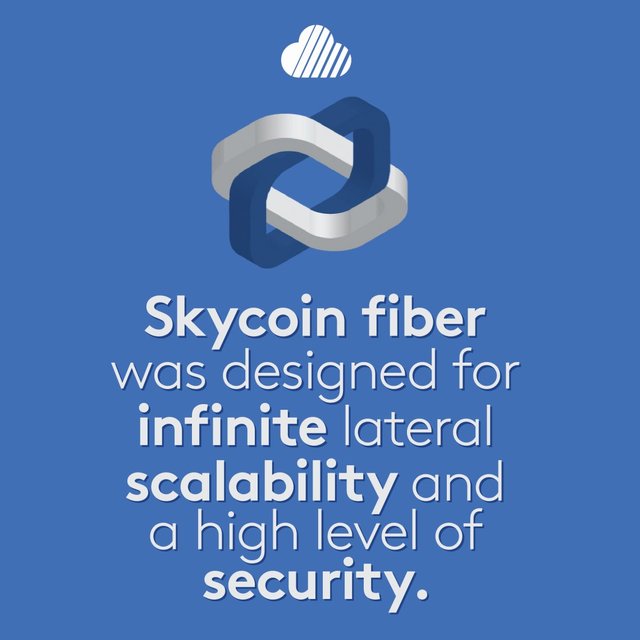
Decentralized social networks
Its own ICO platform and
A privacy protocol stronger than monero and Zcash
Skycoin transactions do not incur fees. Transaction fees, similar to block
rewards that incentive miners to drive up fees at the cost of the network, only
create monetary incentives with adverse effects. By eliminating transaction
fees.
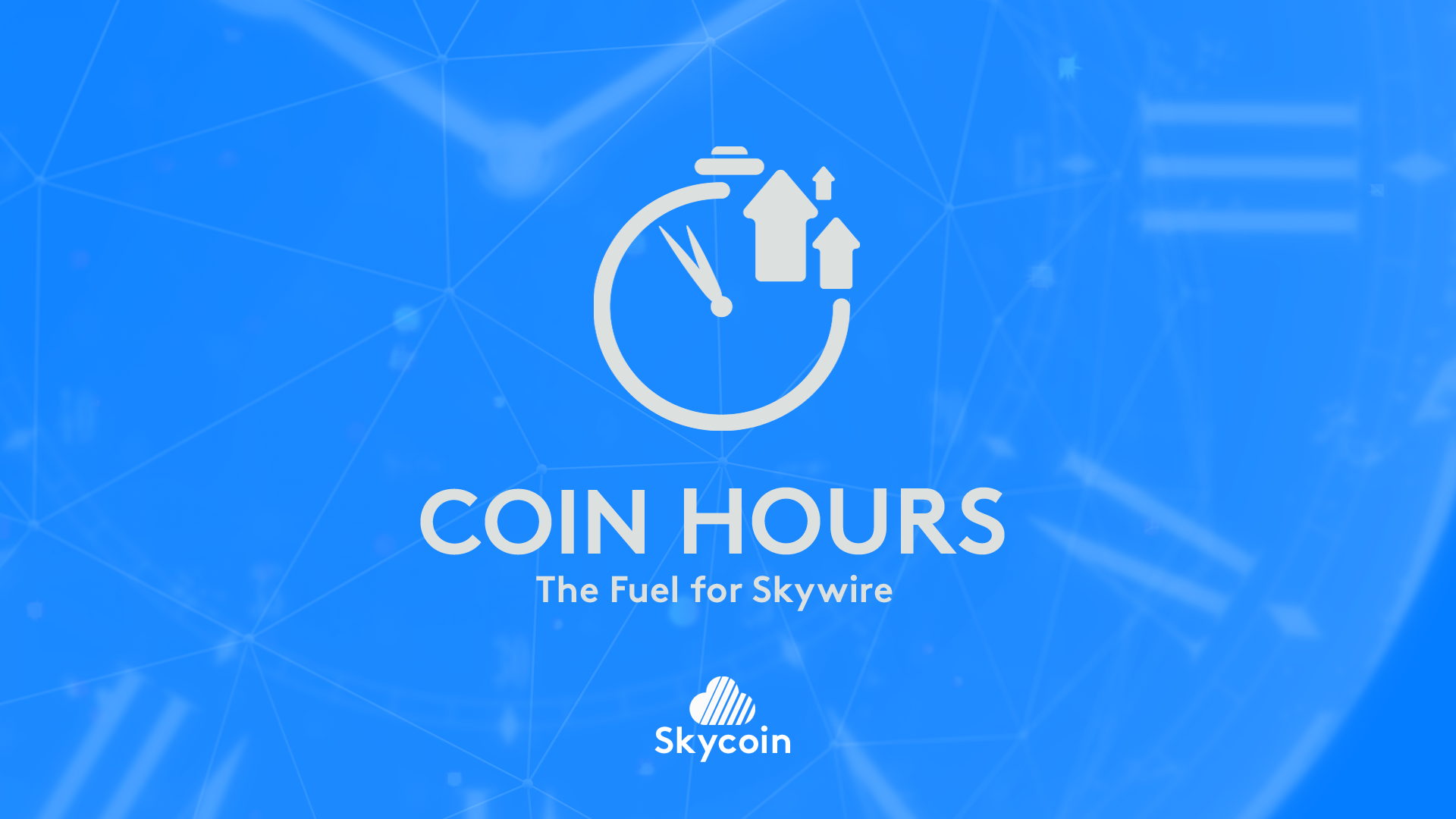
Instead, Skycoin transactions cost Coin Hours—not Skycoin or USD. To earn
Coin Hours, users simply hold Skycoin in order to participate in the ecosystem
of Web 3.0. For each Skycoin held by an address per hour, its owner nets 1 Coin
Hour. Therefore, holding 1000 Skycoin for 1 hour generates 1000 Coin Hours. For
Skycoin held on the exchange, all Coin Hours earned will go to the exchange.
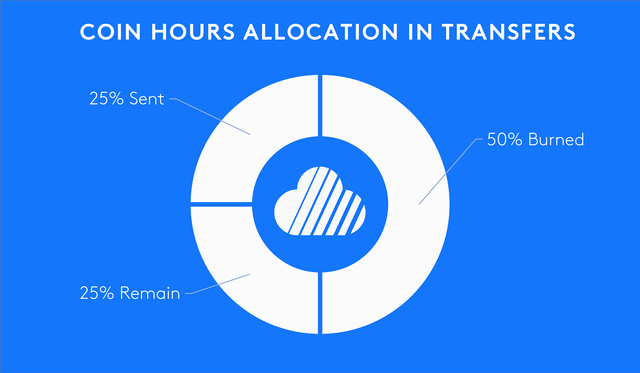
Beyond transaction fees, Coin Hours increase transaction privacy within the
Skycoin CoinJoin infrastructure by acting as collateral for mixing. This prevents
participants from backing out of or slowing down CoinJoin transactions.
It is not just described one of the most ambitious crypto project to date for a reason
It’s a complete ecosystem and with skyfibre, they have a blockchain technology designed for infinite lateral scalability and high level of security, which solves Ethereum scalability issues
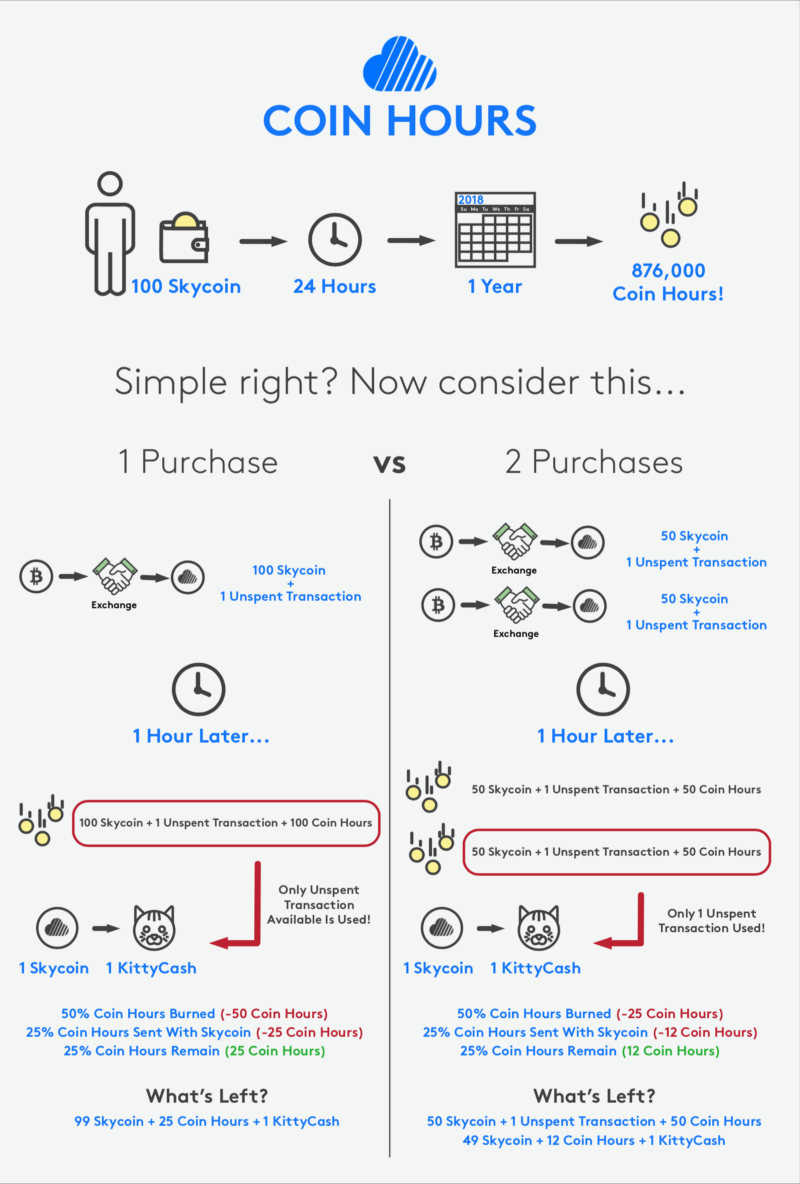
Like Bitcoin, Skycoin is an immutable currency with an issuance capped at 100 million. But unlike Bitcoin, Skycoin features a redesigned consensus mechanism that removes the block reward. This change has profound consequences for users.
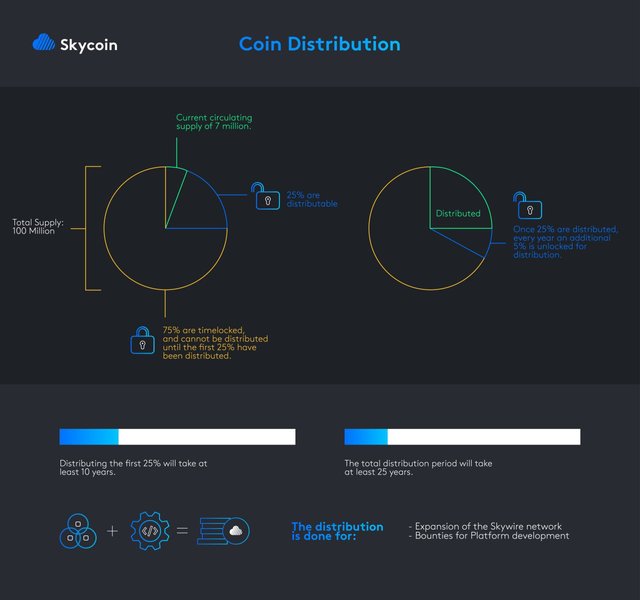
Without the block reward, miners have no incentive to monopolize and control the Skycoin network for personal gain. Skycoin’s design prevents the monopolization that persists in Bitcoin and Ethereum. By eliminating block reward, Skycoin prevents inflation and provides a more perfect “digital gold.”
This it has achieved with Obelisk, Skycoin’s unique consensus algorithm, which is central to the entire Skycoin infrastructure. Web-of-trust consensus changes the way we understand and use blockchain technology. It removes the need for costly mining resources, eliminates the vicious cycle of mining incentives, exponentially improves transaction speeds, and delivers greater security.
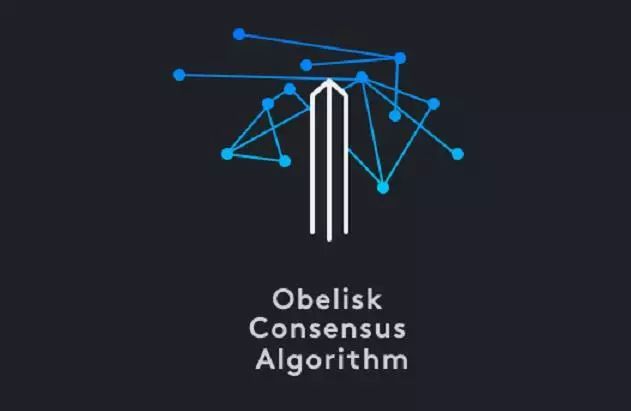
Skycoin was also designed as a privacy coin. By enabling the privacy features, it becomes mathematically impossible for anyone to figure out who has how many skycoin or where they are moving.
Satoshi vision not only doesn’t care with whom you transact, but its code also defends to the death your right to transact with anyone.
When skycoin disable address reuse, it will be doubly mathematically impossible to derive any information from the public information in the blockchain. Skycoin's privacy features are beyond monero or dash.
Skycoin’s transaction structure was designed to seamlessly adopt the CoinJoin
protocol. Once integrated, Skycoin mixes transactions from multiple wallets
to ensure they are indistinguishable from one another.
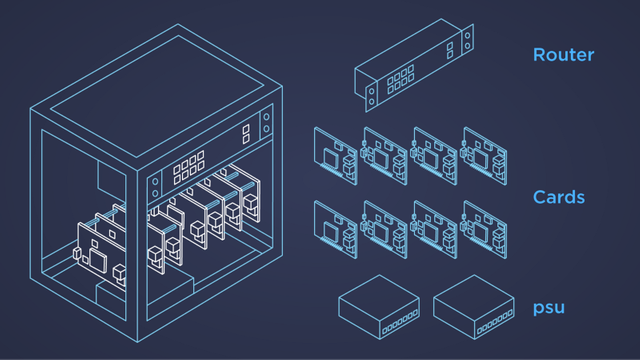
The Hardware wallet may even be programmed to do auto-shuffles. Since skycoin do not have transaction fees. Skycoin also has "global mixer" where all the coins for whole blockchain end up in what is mathematically equivalent to being shuffled through the same coin pool. Then if it recommend or enable by default automatic internal shuffles (every few months or year), then no coin from an online wallet will have any statistically differentiating property from any other coin in an online wallet, after only a few months.
So there is a conflict between supporting the privacy features that people want and allowing public verification of distribution.

Satoshi designed Bitcoin to protect wealth from inflation. Bitcoin is an immutable currency, with a finite supply capped at 21 million. By capping the number of Bitcoins that can exist, Satoshi hoped to create digital gold: he wanted to provide a premium investment that could return value over the years.
Skycoin has been in development since 2012 and with a highly skilled team from the original developers of bitcoin and Ethereum they got together to find the solutions to existing first and second-generation’s cryptocurrencies.
This is the most complete project in the cryptocurrency space and with the testnet of the skywire taking off later this month; we are at a verge of a world wonder
Find out more at https://www.skycoin.net
Facebook: https://www.facebook.com/skycoinproject
Twitter: https://www.twitter.com/skycoinproject
Reddit: https://reddit.com/r/Skycoin
Telegram: https://t.me/Skycoin
follows me at twitter https://twitter.com/bivins1
If you find the article interesting, please upvote and you can send your skycoin donation to
ELoYH9tHCQPi7ePsUc2v6ELkTa7vuPgC8b
Coins mentioned in post: